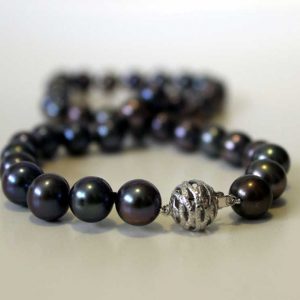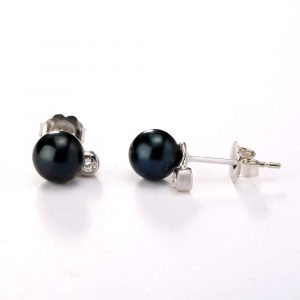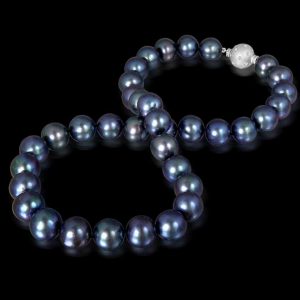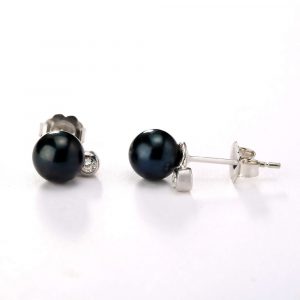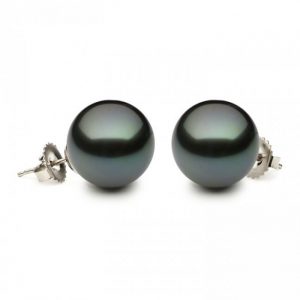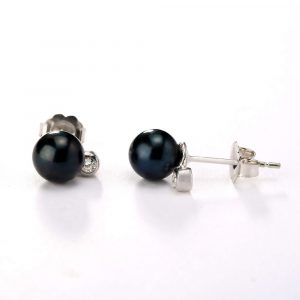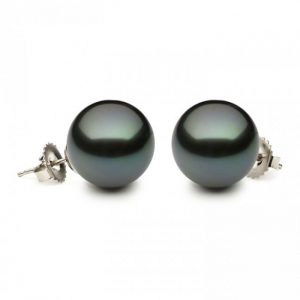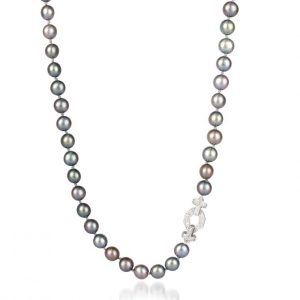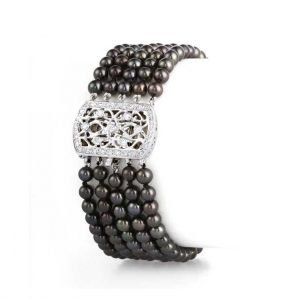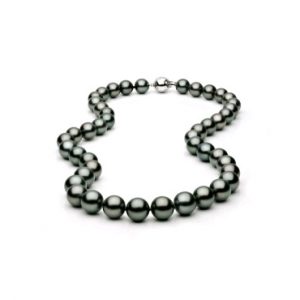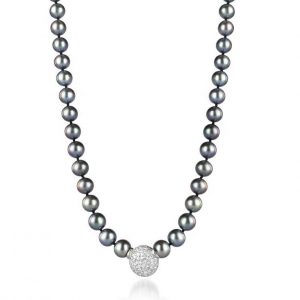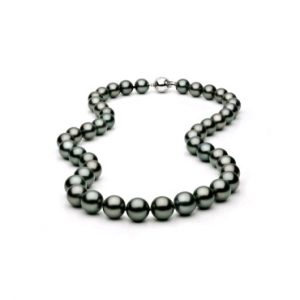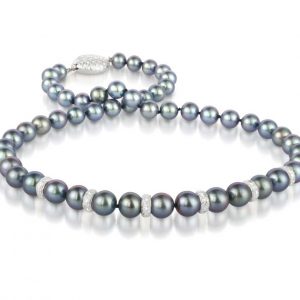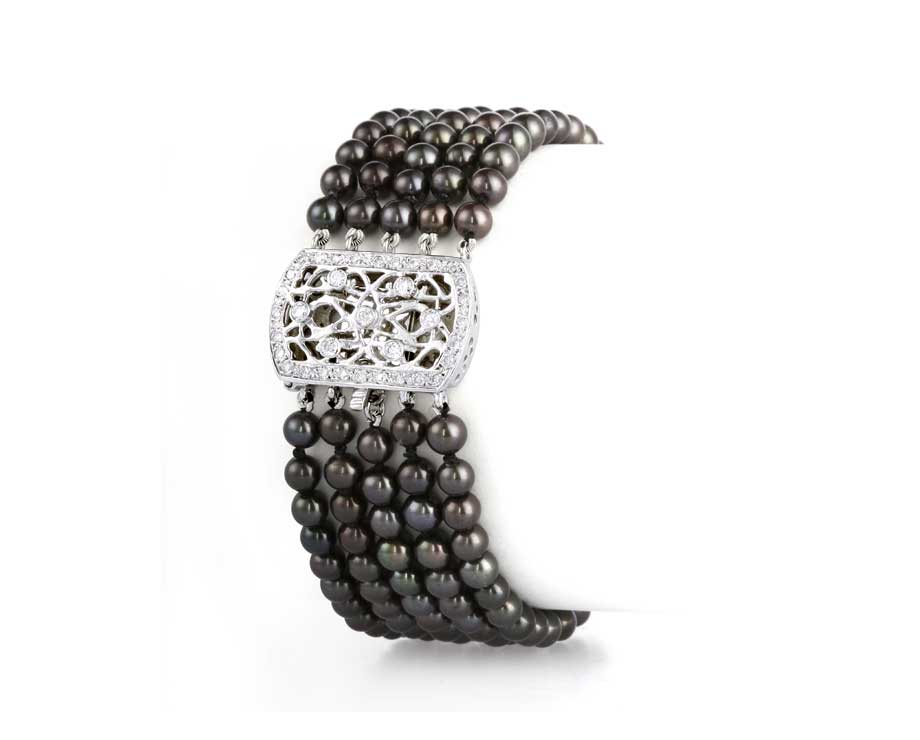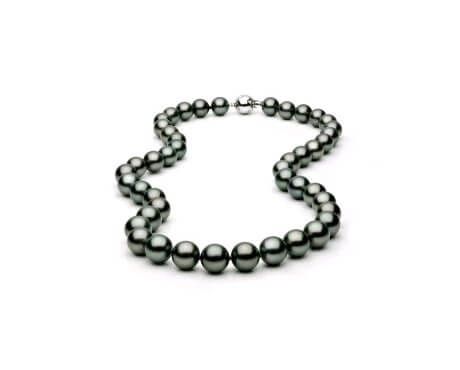Shop Black Pearls
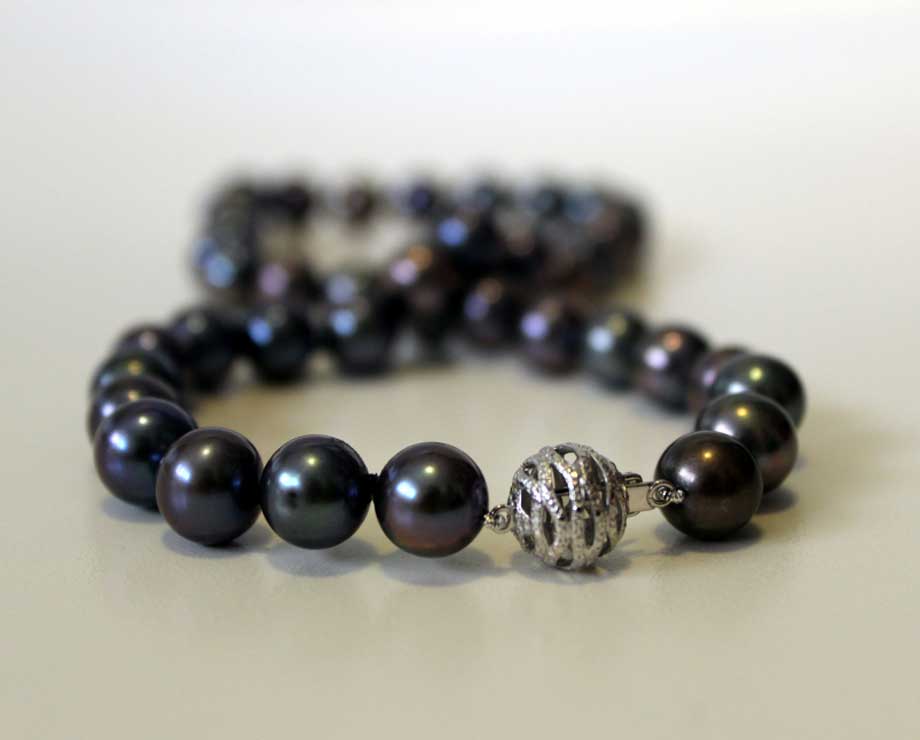
Showing all 13 results
-
Necklaces, Pearl Jewelry, Shop Black Pearls, Single Strand Pearl Necklaces
Black Freshwater Pearl Necklace
$400.00 Add to cart -
Black Pearls, Earrings, Pearl Jewelry, Shop Black Pearls
6mm Black Pearl and Diamond Earrings
$545.00 Select options -
Necklaces, Pearl Jewelry, Shop Black Pearls, Single Strand Pearl Necklaces
Black Freshwater Pearls with Random Set Ball Clasp
$660.00 Add to cart -
Black Pearls, Earrings, Pearl Earrings with Diamonds, Pearl Jewelry, Shop Black Pearls
7mm Black Pearl and Diamond Earrings
$720.00 Select options -
Black Pearls, Earrings, Pearl Jewelry, Shop Black Pearls
9 – 9.5 mm Tahitian Pearl Earrings
$775.00 Select options -
Black Pearls, Shop Black Pearls
8mm Black Pearl and Diamond Earrings
$1,050.00 Select options -
Black Pearls, Earrings, Pearl Jewelry, Shop Black Pearls
10mm Tahitian Pearl Earrings
$1,150.00 Select options -
Necklaces, Pearl Jewelry, Pearl Lustre Collection, Shop Black Pearls, Single Strand Pearl Necklaces
Black 6mm Pearl Octagon Necklace
$1,200.00 Add to cart -
Bracelets, Multiple Strand Pearl Bracelets, Pearl Jewelry, Pearl Lustre Collection, Shop Black Pearls
Black Beauty Pearl Bracelet
$1,650.00 Add to cart -
Necklaces, Pearl Jewelry, Pearl Lustre Collection, Shop Black Pearls, Single Strand Pearl Necklaces
10-12mm Tahitian Pearl Necklace
$1,800.00 Add to cart -
Necklaces, Pearl Jewelry, Pearl Lustre Collection, Shop Black Pearls, Single Strand Pearl Necklaces
Black Ball Pearl Necklace
$2,150.00 Add to cart -
Necklaces, Pearl Jewelry, Pearl Lustre Collection, Shop Black Pearls, Single Strand Pearl Necklaces
13-15mm Tahitian Pearl Necklace
$2,500.00 Add to cart -
Necklaces, Pearl Jewelry, Pearl Lustre Collection, Shop Black Pearls, Single Strand Pearl Necklaces
Diamond Rondel Southsea Pearl Necklace
$6,850.00 Add to cart
Showing all 13 results
Black Pearls: Their Origin, History and Legends
Black pearls are expensive, exotic, and mysterious. While it is possible to dye pearls black, it takes extremely rare conditions to form gems that have a dark glow naturally. This is exactly why they are so sought after.
In the past, only the rich were able to buy black pearls. Although they are still rare, the landscape has changed, and black pearls are now farmed, making them more available at a more affordable price.
However, when compared to its white pearls, natural black pearls are much more expensive. What makes them so unique, precious and mysterious? Here are all the answers you need.
Black Tahitian Pearls
The first thing you need to know about black pearls is that Black Tahitian Pearls (also known as Black South Sea pearls) are the only natural pearls. Besides them, there are two other types of black pearls that are treated: Black Akoya Pearls and Black Freshwater Pearls.
However, Tahiti, the main island of French Polynesia, doesn’t produce pearls itself. Instead, Tahitian pearls are grown in French Polynesia, which is a group of five island archipelagos.
The Tuamotu Archipelago and the Gambier Islands are two archipelagos that are responsible for most of the pearl production.
Because they are grown in the ocean, Black Tahitian Pearls are saltwater pearls. In general, saltwater pearls tend to be more glossy than freshwater pearls, which makes them more valuable.
Besides Black Tahitian Pearls, there are three other types of saltwater pearls: Akoya pearls (classic white pearls grown off the coast of Japan), White South Sea pearls (very rare and valuable pearls grown in the waters of Australia, Indonesia, and the Philippines), Golden South Sea pearls (also cultivated off the coast of Japan, only with a more vibrant color).
How Pearls Become Black
Natural black pearls (or the ones that are not grown under controlled conditions in pearl farms) are created just like any other pearl. It all begins with an irritant, such as a grain of sand, getting stuck in the oyster’s body.
The oyster tries to ease its discomfort by coating it in calcium carbonate, which then hardens and eventually becomes a pearl. It’s important to note that the pearl is made up of the same shiny substance that the inside of the oyster’s shell, also known as nacre, is lined with.
Black pearls are formed when the piece of an irritant (such as sand) gets into the body of a specific type of oyster, which is the Tahitian black-lipped Pinctada margaritifera. The Tahitian black-lipped oyster is special for its inside; unlike the other oysters that have a glossy white nacre, the Tahitian black-lipped oyster features a thick black color. When pearls form near it, they suck up that coloring and become black.
It’s also possible that an oyster that typically produces white pearls, can have an unusual black coloring in its nacre, and it therefore creates a blackish pearl. However, this is very rare and occurs in one in 10,000 pearls.
Farmed Black Pearls
As for farmed black pearls, they are formed when a small bead is surgically inserted into the pearl sac. During its growth period, hundreds of layers of nacre are produced to cover the beads and finally form the pearl.
When the nacre that envelops the bead is thick enough, the pearl farmer opens the oyster and removes the black pearl.
Dyed Pearls
While some pearls are natural to be black, there are others that are dyed. There are several ways to spot a dyed pearl. First, the color of a dyed pearl looks too perfect to be natural. And speaking of natural, the only real, black pearls (Tahitian pearls) are approximately 8 mm in size. That said, it’s safe to assume that black pearls that are under 8 mm are probably dyed.
For example, Black Freshwater Pearls from China are dyed pearls. They are grown in man-made lakes, ponds, and rivers. The process of dying black pearls usually takes a few days to complete. First, the pearls are half or fully drilled. Then they are soaked in the black dye solution until it goes into all the nacre layers. The final color depends on the type of dye, and it can range from colorful to solid black colors.
Source: www.pearlclasp.com
Black Pearl Colors
The materials inside the oyster’s shell are the ones it uses to produce a pearl. The nacre (or the inside of the black-lipped oyster) features a thick band of black, but also, other colors, such as rich greens, blues, and purples. When the pearl is formed near the band, black pearl comes into existence.
While only black-lipped Pinctada margaritifera oysters are capable of producing black pearls thanks to their array of colors on their lips, black pearls produce a wide range of colors, including blue, green, and purple.
Dyed black pearls also have a wide range of colors; from shades of plum, green, blue to gray, all depending on the tissue that is being used. Technicians insert a small square of donor mantle tissue with a mother of pearl shell bed when farming a Tahitian pearl. Black Tahitian pearls also often have strong overtones of red, aubergine, green and peacock.
Source: www.flickr.com
Black Pearl Sizes
Typically, Tahitian black pearls are between 8-14mm in size. They are much larger than the classic white Akoya or Freshwater pearl. Black pearls that are larger than 15mm are rare, while those that exceed 17mm are considered a rare treasure. Any black pearls that you may find that are under 8mm, are usually dyed pearls.
Black Pearl Shapes
While round pearls are the most popular, and therefore, the most expensive, pearls are rarely perfectly round. Tahitian black pearls come in five different shapes: circular or semicircular, oval or button-shaped, drop-shaped, circle-shaped, semi-baroque or baroque.
Black Pearl Surface
The more perfect the surface of a black pearl, the higher the value it has. However, the surface of pearls often has little bumps, wrinkles, and spots.
History and Legends Behind Black Pearls
Once upon a time, black pearls were not as valuable as they are today. The first mention of black pearls history writings was in 1850 when 8 grains of perfectly round black pearl gems were sold for $500. According to some sources, it was Empress Eugenie of France, the wife of Napoleon III, who bought them.
Before that, the demand had always been high for white and yellow pearls. It wasn’t until Empress Eugenie started wearing them that they became fashionable in Europe. As it appears from Winterhalter’s portrait of the queen, who was at the height of her power, she wore them as a part of her fabulous necklace. After the fall of Napoleon III, the necklace was sold at Christie’s for $20,000.
Source: www.pearlclasp.com
There is another interesting story that involves black pearls. Back in the 19th century, Hungarian premier, Count Louis Batthyany, had a mesmerizing black pearl on his scarf pin.
The Count was sanctioned and executed in 1849. Before the execution, he gave the pearl to his valet, who then gave it to his son. When the valet’s son tried to sell it, the authorities in Budapest heard about it and started an investigation.
What they discovered was shocking; the pearl had been stolen 150 years ago from the English crown. It still remains a mystery how the black pearl gem ended up on the Count’s scarf.
There are also many myths and legends around black pearls. One of them involves Oro, the Polynesian god of peace and fertility, who visited the earth on a rainbow and gave a black pearl to Princess Bora Bora. This black gem was a symbol of his love. Even today, some people believe that buying someone black pearl jewelry represents eternal love.
According to a Chinese legend, a natural black pearl is a symbol of infinite wisdom. Pearls were formed in the heads of dragons, which the Chinese perceived as wise. The dragons carried black pearls between their teeth until their death.
And according to a Ceylon legend, Adam and Eve shed tears which then created a lake of pearls. The white pearls were formed by the tears of Eve, while the black pearls came from Adam. And because men cry less than women, that explains why black pearls are so rare.

